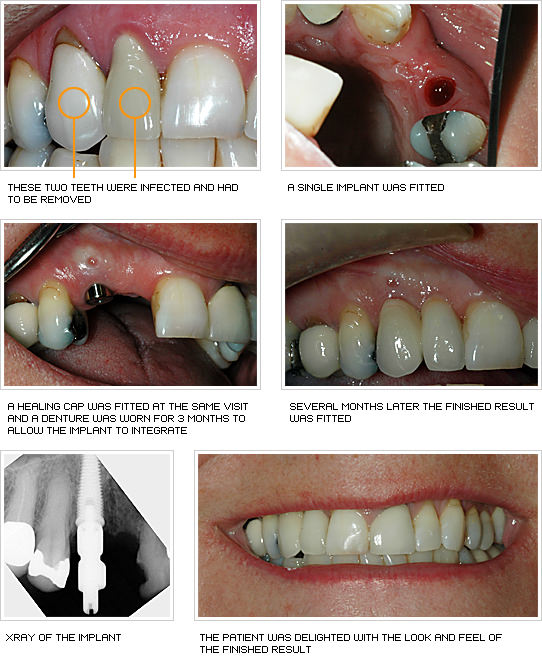Some Known Facts About Dental Sense.
Some Known Facts About Dental Sense.
Blog Article
Dental Sense Can Be Fun For Everyone
Table of ContentsThe 6-Minute Rule for Dental SenseAn Unbiased View of Dental SenseThe Best Guide To Dental SenseUnknown Facts About Dental Sense
are clinical tools surgically implanted right into the jaw to bring back a person's ability to chew or their look. They provide assistance for fabricated (fake) teeth, such as crowns, bridges, or dentures. When a tooth is shed because of injury or disease, an individual can experience difficulties such as rapid bone loss, faulty speech, or modifications to eating patterns that result in pain.Dental implant systems include an oral implant body and dental implant abutment and may likewise include an abutment fixation screw. Front tooth filling. The dental implant body is operatively placed in the jawbone instead of the tooth's root. The oral implant abutment is typically connected to the implant body by the abutment addiction screw and expands with gums into the mouth to sustain the affixed man-made teeth
(https://www.domestika.org/en/dentalsense1)Framework of The Dental Implant System picking oral implants, talk to your oral company about the possible advantages and threats, and whether you are a candidate for the treatment. Things to consider: Your general health and wellness is an important consider establishing whether you are an excellent candidate for oral implants, for how long it will certainly require to recover, and the length of time the dental implant may remain in place.
Cigarette smoking may affect the healing procedure and decrease the long-term success of the dental implant. The recovery process for the dental implant body might take numerous months or longer, throughout which time you usually have a momentary abutment instead of the tooth. the oral implant treatment: Very carefully comply with the dental health guidelines provided to you by your dental copyright.
What Does Dental Sense Do?
Implant failing can cause the demand for another medical treatment to fix or change the dental implant system. Restores the capability to chew Brings back cosmetic appearance Helps keep the jawbone from diminishing due to bone loss Maintains the health of the bordering bone and gums Helps maintain adjacent (neighboring) teeth steady Enhances top quality of life Damages to bordering all-natural teeth throughout dental implant positioning Injury to the surrounding cells throughout surgical treatment, such as sinus perforation Injury throughout surgical treatment (for instance, fracture of surrounding jawbone) Inadequate feature, such as seeming like the teeth do not bite with each other generally An experience that the tooth is loose or turning in position resulting from an abutment screw loosening up Implant body failure (looseness of the dental implant body) because of systemic infection, which may be more probable in patients with unrestrained diabetes due to regional infection in bone and periodontals sustaining the dental implant body due to delayed healing, which may be more probable in people that smoke Difficulty cleaning up the periodontals around the implant, causing poor oral health Untreated periodontal condition Post-surgical pins and needles as a result of nerve impingement or damages Constantly inform health treatment companies and imaging service technicians that you have dental implants before any magnetic resonance imaging (MRI) or x-ray treatments.
FDA is not familiar with any kind of damaging occasions reported for MRI or x-ray treatments with oral implants. Oral implants systems are typically made of materials that adhere to worldwide consensus requirements of the International Organization for Standardization (ISO) or ASTM International. These criteria have information of what makes a safe material.

A dental implant is a structure that changes a missing out on tooth. With screw-like tools, the surgeon inserts a dental implant into the jawbone, and it functions as a support for a synthetic tooth, called a crown. A tool called an abutment connects the fabricated tooth to the dental implant. The crown is tailor-made to fit the individual's mouth and match the color of their teeth.
A Biased View of Dental Sense
Some individuals are not eligible for oral implant surgical procedure. It is for oral surgeons to run on people with: intense illnessuncontrollable metabolic diseasebone or soft cells illness or infectionIf these problems are settled, a person can have the surgical procedure. In, oral specialists avoid operating individuals with: If individuals with any one of the above undergo dental implant surgical treatment, there is a greater threat of the dental implant failing.

Oral implant surgery is a customized process. Offer you time to heal. Attach the article and final crown, bridge or denture.
Next off, your cosmetic surgeon will very carefully put the oral implant into your jaw. Lastly, your surgeon will rearrange your gum tissues and shut the laceration with stitches. If your implant is near the front of your mouth, your dental practitioner will make a short-term tooth for you to put on up until you recover. That method, you won't have a void in your smile while you recover.
Some Known Facts About Dental Sense.
During the recovery phase, your jawbone needs to fuse to the oral implant. This process can take anywhere from three to nine months.
Once your implant heals, your dental practitioner can affix the joint (tiny adapter blog post) and your final remediation (crown, bridge or denture). This normally takes regarding one hour to complete and might Our site call for a second small surgical treatment. You should not feel any pain throughout your dental implant procedure since your provider will certainly use medicine to numb your gum tissues.
Report this page